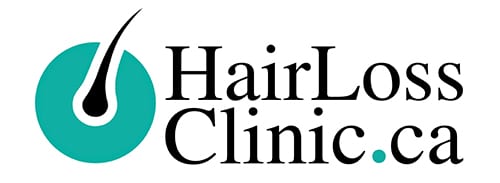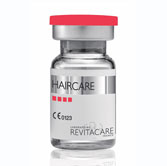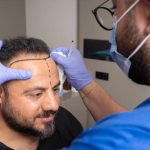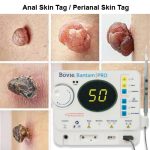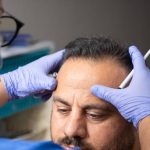WOMENS HAIR LOSS AND RECOMMENDED TREATMENTS
 Womens hair loss can be emotionally and psychologically damaging for women. One-third of women will have hair loss at some point in their lives. It is as high as two-thirds for postmenopausal women.
Womens hair loss can be emotionally and psychologically damaging for women. One-third of women will have hair loss at some point in their lives. It is as high as two-thirds for postmenopausal women.
A certain amount of hair loss is normal and undetectable – on average, most people lose 50 to 100 hairs daily. Female baldness makes it possible for this hair loss to be more distressing and severe.
However, whether it’s subtle thinning all over or a bare patch where the scalp can be seen, it can appear different than typical “baldness.”
There are numerous types of female baldness, each with its causes. For example, the thinning hair associated with female pattern baldness differs from the rapid hair loss caused by telogen effluvium.
WHAT IS FEMALE PATTERN HAIR LOSS
Female pattern hair loss (FPHL), commonly referred to as female pattern baldness or female pattern alopecia, is a type of womens hair loss. Androgenetic alopecia is a genetic disorder that affects men and women alike. Hair loss in women follows a distinct pattern from hair loss in men. The frontal hairline recedes into the back of the head with male pattern hair loss, like a horseshoe. The hairs on the side and rear of most men’s heads are unaffected.
The pattern for female pattern hair loss is distinct. Women suffer from dispersed hair loss that begins at the top of the scalp and progresses to thinning throughout the entire scalp region.
Hair miniaturization is a symptom of androgenetic alopecia. These hairs get so tiny that you believe they have vanished over time. Miniaturization affects all the hairs in the horseshoe pattern in men. Women, on the other hand, do not have all their hair miniaturized. In contrast to male pattern hair loss, most women keep their frontal hairline despite hair thinning.
WOMENS HAIR LOSS TYPES
• Female-Pattern Hair Loss (Androgenic Alopecia)
• Alopecia Totalis
• Alopecia Areata
• Alopecia Universalis
• Centrifugal Cicatricial Alopecia (This is a type of alopecia that occurs in the central part of the scalp)
• Alopecia Cicatricial (scarring alopecia)
• Alopecia Frontal Fibrosing (FFA)
• Lichen Planopilaris
• Telogen Effluvium
• Traction Alopecia
• Trichotillomania (Hair Pulling Disorder)
WHAT CAUSES FEMALE PATTERN HAIR LOSS
Female pattern baldness is usually hereditary, resulting from a genetically shorter hair-growing period and a longer time between the shedding and growth phases.
Parents’ genes may also influence hair growth, resulting in smaller follicles and thinner hair strands.
However, age and hormones may also play a role, as it is more common after menopause when estrogen levels drop in women.
This implies that the effects of male androgen hormones, which have been linked to male pattern baldness, may be stronger.
More androgenetic activity can also result from an underlying endocrine condition, such as an ovarian tumor.
Symptoms Of Womens Hair Loss
Hair loss can manifest itself in various ways, depending on what is causing it. It might strike abruptly or gradually, and it can affect only your scalp or your entire body.
The followings are some signs and symptoms of hair loss:
• Widening part: If you part your hair, you may notice that your part is becoming wider, which can signify thinning hair.
• Hairline receding: Similarly, if your hairline appears higher than usual, it could signify thinning hair.
• Loose Hair: After using a brush or comb, inspect it. Is it sucking in more hair than usual? If this is the case, it could signify hair loss.
• Bald patches: These can be of various sizes and grow over time.
• Drains clogged: Your sink or shower drains may become clogged with hair.
• Itching or pain: If you have an underlying skin condition causing your hair loss, you may also experience pain or itching on your scalp.
RECOMMENDED TREATMENTS FOR WOMENS HAIR LOSS
• Advanced Adipose-Derived Stem Cell PROTEIN EXTRACT(AAPE) STEM CELL THERAPY: AAPE is a stem cell technology that helps to regenerate hair follicles and restore them quickly. AAPE is a combination of refined growth factors taken from human adipose-derived stem cells conditioned medium that stimulates the proliferation of dermal papilla cells in human hair follicles, increasing total hair count and allowing hair to regrow twice as quickly. The use of AAPE or “fat” or an adipose-derived stem cell-conditioned medium in treating female hair loss has been proven successful. The treatment outcomes are documented in popular journal publications, which include a fresh study and scientific analysis of hair growth metrics, as well as photos of the findings. It was also published in the International Journal of Dermatology. AAPE, an improved stem cell-derived protein extract, can now be used in a therapeutic setting without discomfort or delay.
• MINOXIDIL: The only medicine licensed by the Food and Drug Administration (FDA) to treat female pattern baldness is minoxidil (Rogaine). It is available at 2% and 5% concentrations. If possible, use the 5% recipe – earlier research shows it to be more effective. It is outstanding, according to both patients and medical reviews. Every day, apply minoxidil to your scalp. Though it will not completely restore your hair, it can help you grow back a large amount of hair and give it a thicker overall appearance. Results can take 6 to 12 months to appear. You’ll also have to keep using minoxidil to keep the effect going, or it’ll stop working. If this occurs, your hair may revert to its prior state.
• SCALP MICROPIGMENTATION(SMP): If you have scarring alopecia (no hair development in bald patches) or simply want thicker-looking hair, Scalp Micropigmentation is another excellent alternative. It is a procedure in which pigment is deposited into the dermal layer of the skin on the scalp to mimic the appearance of hair follicles. When looked at closely, the pigment specks resemble genuine hair follicles. Scalp micro pigmentation can be used in between existing hair follicles to improve thickness and reduce places where more scalp is visible in female hair loss. SMP is most effective on women with dark brown or black hair.
• PLATELET-RICH PLASMA THERAPY: Platelet-rich plasma therapy may also be beneficial for recovering and rejuvenating hair. Platelet-rich plasma (PRP) is a material that, when injected, helps to enhance healing.
Plasma is a component of your blood that contains unique “growth factors” or proteins that aid in the clotting of your blood. It also has proteins that promote cell development. Researchers created PRP by extracting and concentrating plasma from blood.
This procedure entails drawing your blood, spinning it down, and injecting your own platelets back into your scalp to stimulate hair growth.
To get a FREE online consultation for womens hair loss at: https://hairlossclinic.ca/hairloss-assessment
Comments are closed.
